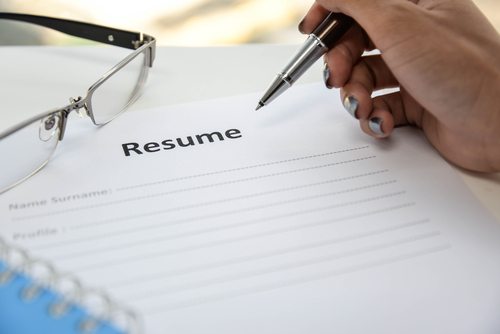Here are some things to include and others to avoid ensuring you are viewed as a viable candidate for potential employers. As Doug Arms says, “A resume is a representation of you. It’s a physical representation of the quality of work that you are capable of.”
Do:
Adapt your resume and cover letter to each job you are applying for.
Yes, you read that right. You should not be sending the same resume to each job. Different jobs require different skills, and you should tailor your professional experience and skills to reflect the skills desired for a specific position. This ensures whoever is hiring you can connect the dots between your experience and the skills needed for the role you are applying for.
Also, make sure you update your cover letter because you aren’t always going to be “apply for the Office Manager position.” And while it may seem like a no-brainer, make sure to keep your resume up-to-date – recruiters will confirm the dates of previous jobs.
Format your resume.
Put effort in your resume. An effortless resume may serve as a reflection of what kind of effort you’ll be putting into the job you are applying for.
Be consistent in your formatting. If one date is on the right, make sure all of them are. Consistency is key. Same bullet point styles, same font and size for the same type of information; if you bold your company’s name make sure all company names are bolding, this makes your resume much easier to read and understand. Formatting can be the difference between getting a phone interview or going straight into the “do not pursue” file.
Proofread and spellcheck your resume.
Upon and a pond have two separate meanings. While type-o’s do happen, a spelling error on a resume shows carelessness and laziness. After all, spellcheck is a universal feature in most software. Use the tools at your disposal to ensure you are conveying the right message to potential employers.
Include the basics.
You can’t get a call to schedule an interview if you don’t leave your contact information, or leave the wrong contact information. Make sure to always include your name, current phone number and professional email address. Also, in the case that you receive a phone call to schedule an interview be certain that your voicemail message is appropriate.
Don’t
Lie.
Yes, this might sound like an obvious one, but companies do background and reference checks on potential employees and that will tell them many things your resume doesn’t.
According to Forbes, the most common resume lies include education, employment dates, job titles, and technical skills. With access to variety of networks, companies are going far beyond just a simple reference check to verify resume information
Include personal information.
You might be an avid traveler, by your frequent flyer miles or Platinum Card Holder status has null to do with the skills needed for the position you’re applying for.
Other personal details you can do without including birthday (invited age discrimination), height and weight, marital status, or social security number unless this personal information is somehow critical to the position.
Leave out vital information.
Experts call it “suspicion by omission.” Flags are raised when information is left out, which may disqualify an applicant from consideration. While experts agree that shorter is sweeter, omitting certain information can lead to confusion and even misinformation.
For instance, be sure to include both the month and year of employment. If you state you worked for a company from 2014-2015, what’s to stop the recruiter from assuming that means December 2014 – January 2015?

